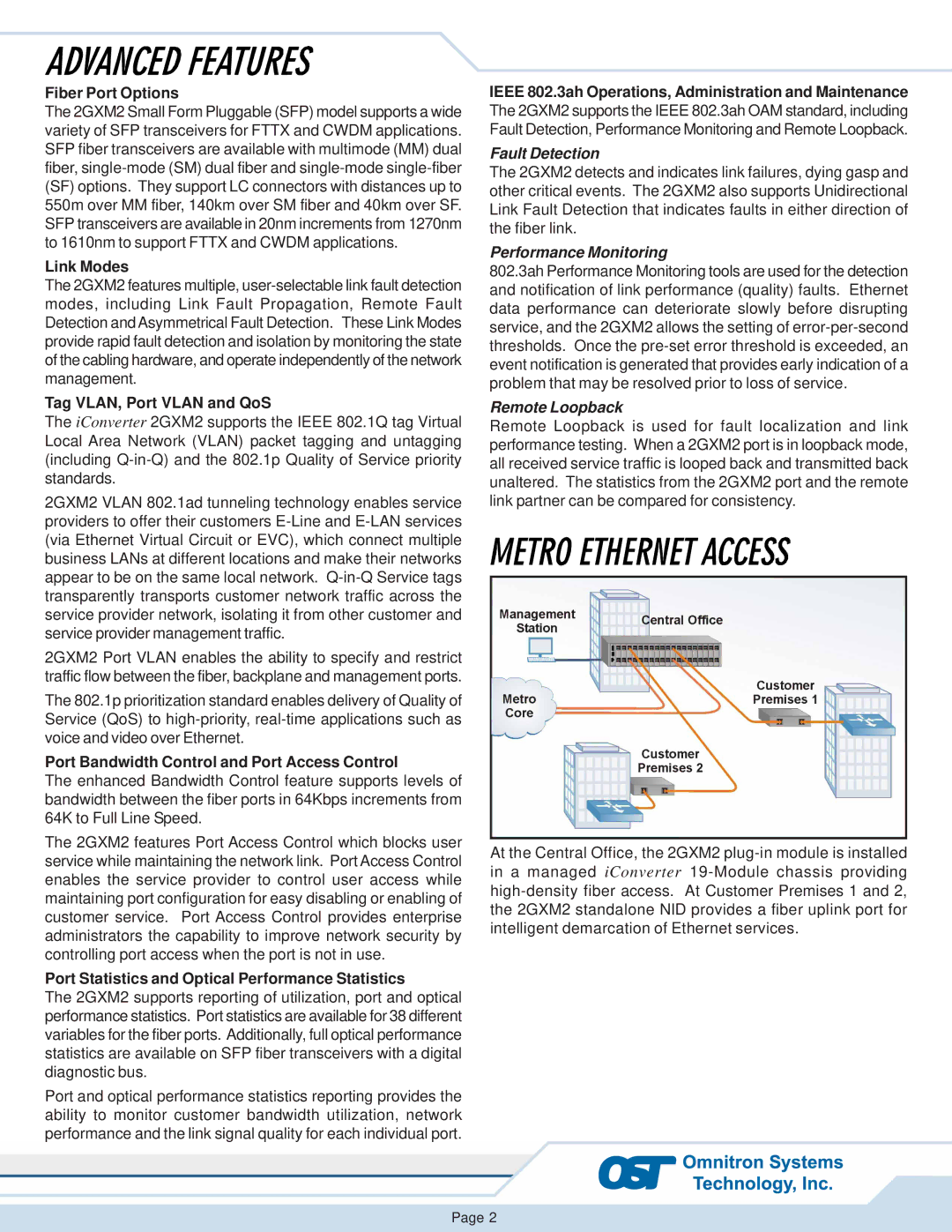
Fiber Port Options
The 2GXM2 Small Form Pluggable (SFP) model supports a wide variety of SFP transceivers for FTTX and CWDM applications. SFP fiber transceivers are available with multimode (MM) dual fiber,
Link Modes
The 2GXM2 features multiple,
Tag VLAN, Port VLAN and QoS
The iConverter 2GXM2 supports the IEEE 802.1Q tag Virtual Local Area Network (VLAN) packet tagging and untagging (including
2GXM2 VLAN 802.1ad tunneling technology enables service providers to offer their customers
2GXM2 Port VLAN enables the ability to specify and restrict traffic flow between the fiber, backplane and management ports.
The 802.1p prioritization standard enables delivery of Quality of Service (QoS) to
Port Bandwidth Control and Port Access Control
The enhanced Bandwidth Control feature supports levels of bandwidth between the fiber ports in 64Kbps increments from 64K to Full Line Speed.
The 2GXM2 features Port Access Control which blocks user service while maintaining the network link. Port Access Control enables the service provider to control user access while maintaining port configuration for easy disabling or enabling of customer service. Port Access Control provides enterprise administrators the capability to improve network security by controlling port access when the port is not in use.
Port Statistics and Optical Performance Statistics
The 2GXM2 supports reporting of utilization, port and optical performance statistics. Port statistics are available for 38 different variables for the fiber ports. Additionally, full optical performance statistics are available on SFP fiber transceivers with a digital diagnostic bus.
Port and optical performance statistics reporting provides the ability to monitor customer bandwidth utilization, network performance and the link signal quality for each individual port.
IEEE 802.3ah Operations, Administration and Maintenance The 2GXM2 supports the IEEE 802.3ah OAM standard, including Fault Detection, Performance Monitoring and Remote Loopback.
Fault Detection
The 2GXM2 detects and indicates link failures, dying gasp and other critical events. The 2GXM2 also supports Unidirectional Link Fault Detection that indicates faults in either direction of the fiber link.
Performance Monitoring
802.3ah Performance Monitoring tools are used for the detection and notification of link performance (quality) faults. Ethernet data performance can deteriorate slowly before disrupting service, and the 2GXM2 allows the setting of
Remote Loopback
Remote Loopback is used for fault localization and link performance testing. When a 2GXM2 port is in loopback mode, all received service traffic is looped back and transmitted back unaltered. The statistics from the 2GXM2 port and the remote link partner can be compared for consistency.
At the Central Office, the 2GXM2
Page 2
